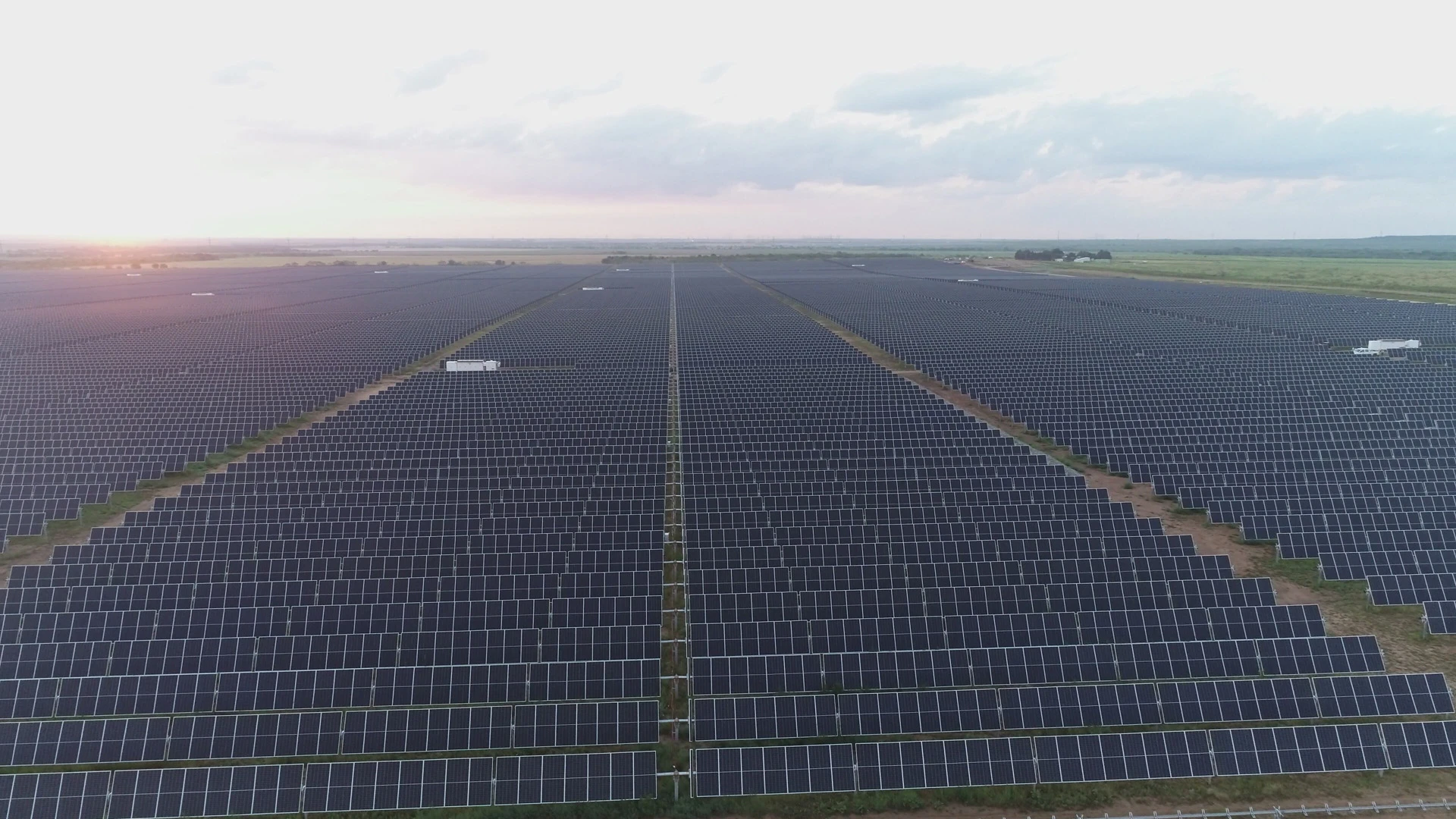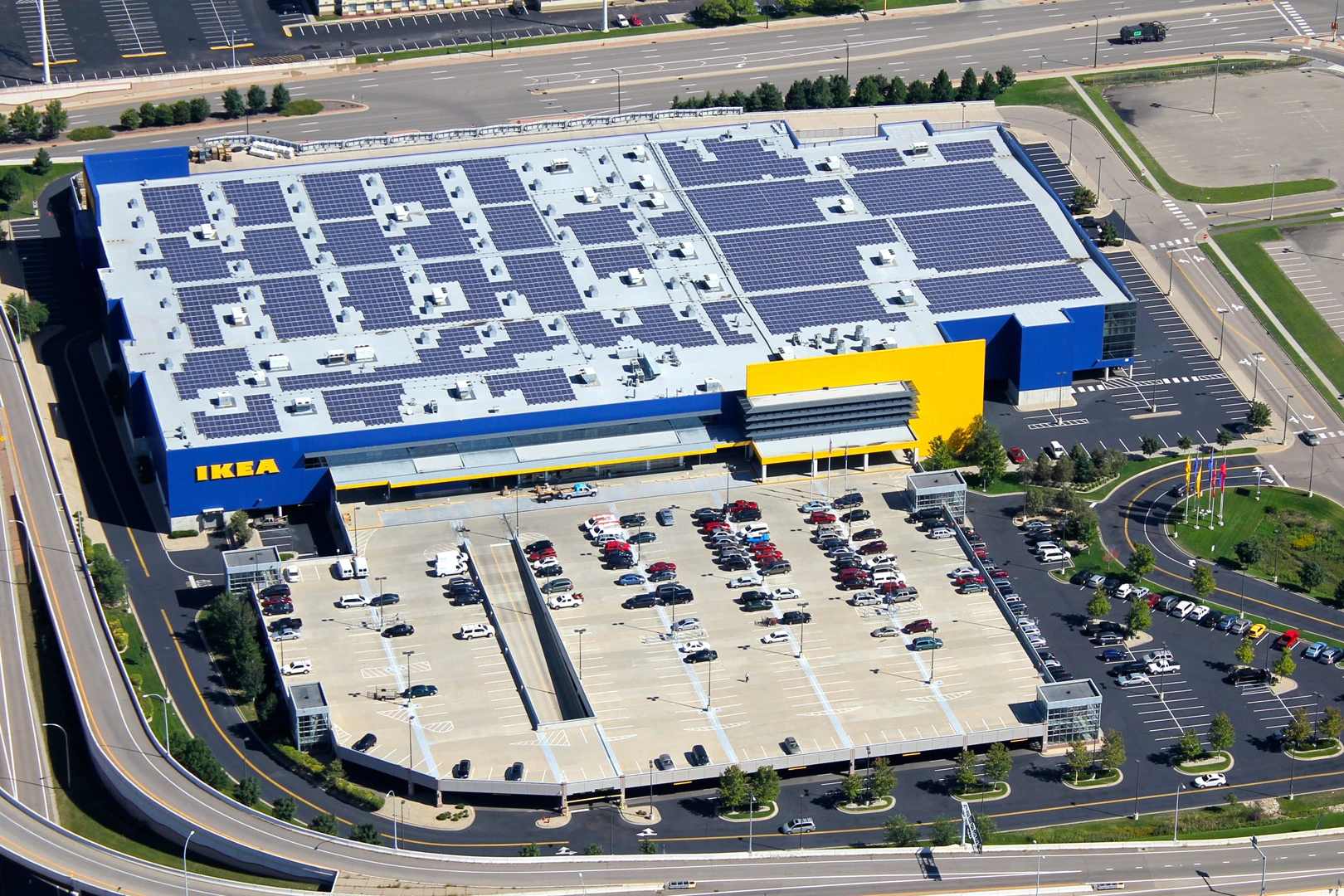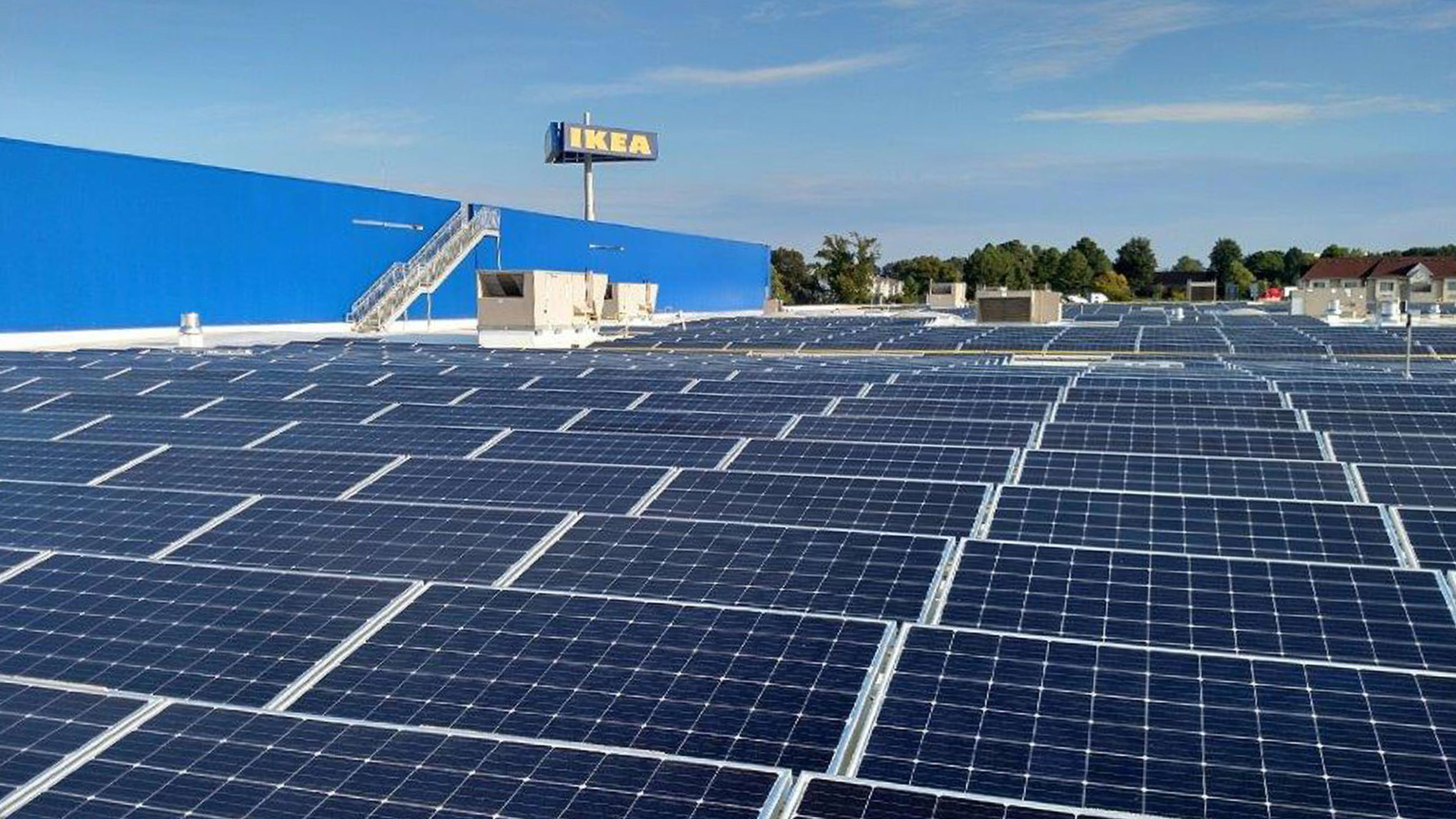Over the last decade, Ikea’s parent company has invested around $2.7 billion in renewable energy. Today, the company announced that its latest investments—in two large solar plants in the U.S. and a wind farm in Romania—will tip it over a milestone that it originally aimed to achieve a year from now: The company will be able to produce more renewable electricity than it uses in all of its own buildings, including its hundreds of retail stores.
“We’re a year ahead of schedule,” says Pia Heidenmark Cook, chief sustainability officer for the Ikea Group. When the company started working on renewable energy, it made the most sense to own renewable energy directly, and Ikea stores are now plastered with more than 900,000 solar panels. It also has more than 500 on-site wind turbines. Now, as the cost of renewable electricity has steeply fallen and many more projects exist, it’s becoming a part owner in sprawling off-site plants. “We’re going into bigger projects and partnering because otherwise it’s difficult to get to scale,” she says.

The work is part of a much larger goal to become “carbon positive” throughout the company’s entire value chain, meaning that it will reduce more greenhouse gas emissions than it emits. That involves everything from making deliveries in electric vehicles to changing consumer behavior. In stores, the company is beginning to shift to renewable heating and cooling (a more challenging goal than renewable electricity, since fewer options for cheap tech are universally available). It’s also rethinking product design. “We’re reanalyzing the material that goes into the products: Which ones are heavy on carbon? Which ones have the biggest footprint?” Cook says. “Are there alternative materials today, or do we need to innovate to find new material?” By 2030, it plans to use only recycled or renewable materials.

The biggest change involves a shift in the company’s business model, as it begins to experiment with leasing furniture and other ways to reclaim products when customers no longer need them—so materials can be reused rather than ending up in landfills. Since materials are the biggest part of the company’s total carbon footprint, reusing those materials is one key to making it possible for the company to cut emissions in line with the goals of the Paris climate agreement. Ikea is actively studying new ways to sell products now. A furniture rental program that began in limited markets is expanding to 30 countries. “We’re progressing with the tests and learning more and more to see how can we maintain ownership of products and make sure the products live not only one or two times, but many times,” says Cook.
Even as the company is projected to grow, it plans to slash emissions 50% by 2030 in absolute terms. Other emissions will be offset through projects like planting trees (the company is now working to better calculate the carbon sequestration value of forests and its own products made from wood) and more renewable energy. It’s feasible for other retailers to also make the investment to move to renewable energy, Cook says. “It’s profitable to work with wind and solar,” she says. “It’s a good business case. So there is that part of it, and also, of course, it’s the right thing to do. We believe that the future is renewable.”
Recognize your brand’s excellence by applying to this year’s Brands That Matter Awards before the early-rate deadline, May 3.
